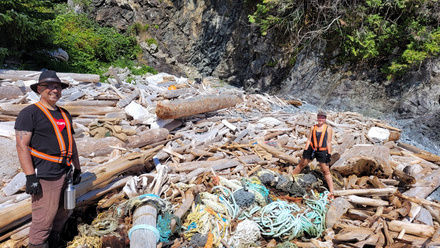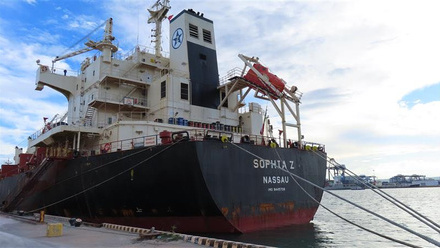Fishing Safety and the Numbers: A Call for Action
Is fishing the world’s most dangerous job? According to Eric Holliday FIMarEST, founder and CEO of the FISH Safety Foundation, it just might be. Leading an international non-profit focused on improving safety in the global fishing industry, he asserts that better data is essential to tackling this widespread, and often overlooked, crisis.
A few years back I was speaking about our work at a World Maritime University Conference in Busan, South Korea, outlining our Foundations’ work in developing the FISHER Project. In answering a question about “how do fishers die?”, I noted firstly the ‘normal’ maritime way – such as the vessel sinks or burns (i.e. the vessel / safe refuge is lost), or the fisher dies in an enclosed space, or they fall from height, or get caught in the winch.
But then I added that small-scale fishers could also be shot by another fisher with an AK-47 for straying into ‘their’ part of a lake in Africa, they could be hijacked, killed and their boat and engine taken by ‘pirates’.in the Caribbean, they could get knocked out of their canoe and be killed by an angry hippopotamus, or they could be eaten by a Bengal Tiger in the Sundarbans after swimming ashore when their boat sinks in the Bay of Bengal. At which point a senior UN Agency representative exclaimed: “You can’t include those kinds of deaths – we’re talking about maritime-type accidents!”
The need for data collection and analysis is clearly understood in most high-risk industries. This is not the case in the global fishing sector. Without comprehensive data, we don’t know how many fishers die each year, how they die, where they die, and why they die… nor do we have sufficient information on how many are unable to continue fishing because of serious (often life-altering) injuries or occupational ill-health each year.
We don’t know how many fishers die years earlier than their shore-based friends and family as a result of occupational health issues. In short, we know very little about the tens of thousands of fisher deaths every year. And without that data, we can have no confidence that the safety improvement interventions that we undertake in the fishing sector are effective. We urgently need data!
Recent research by the FISH Safety Foundation has confirmed the unacceptably high fatality rate in this sector, with an estimated fatality total in excess of 100,000 fishers per year. To address this situation, we have been calling for the development of a repository of global fishing casualty/fisher fatality data (and an accompanying fit-for-purpose legislative framework to support this) for a number of years.
The clear objective of our FISHER project is to gather accurate and comprehensive data on global fishing vessel casualties and fisher fatalities, serious injury and occupational illness, analyse this data, and contribute to the development and promotion of innovative interventions for increased fisher safety and wellness, and ultimately fewer fatalities in the international fishing sector – which I believe is, by any measure, the most hazardous occupation in the world.
Returning to our conference attendee response, he voiced exactly the problem we have in trying to gather accurate data in this sector. When we approach the problem with a traditional ‘maritime’ lens only, it doesn’t work. To complicate the issue further, there is no universally accepted definition of a ‘fisher’, and we also have very little information on how many fishers there are in the world. For years the official number of fishers was put at some 39 million. This has now been revised to 61.8 million by the FAO, and even that number is probably not fully inclusive of all the fishers (such as marine, inland, and aquaculture) in the world. We simply don’t have accurate information.
To try and highlight the importance of the ‘numbers’ in the global fishing sector, we recently published a White Paper, examining the issues behind this state of affairs in more detail. The “Why the Numbers Matter” report is available to download on the Fish Safety Foundation’s website
Unfortunately, the fishing safety ‘numbers’ discussion (total global fisher deaths, injuries, and fatality rates), is still heavily influenced by a seemingly faulty, decades-old fatality rate (given as 24 000 fatalities a year) – originally proposed by the FAO (1987) and confirmed by the ILO (1999) – but still apparently being used by the Authorities as the basis for decision-making and sector intervention. This needs to change.
One thing that is abundantly clear though, is that the current level of risk in the global fishing sector (as evidenced by the exceedingly high fatality rate) cannot be considered ‘acceptable’ or ‘tolerable’ by the IMO and other responsible Agencies.
We need data, and we need to act on that data.






